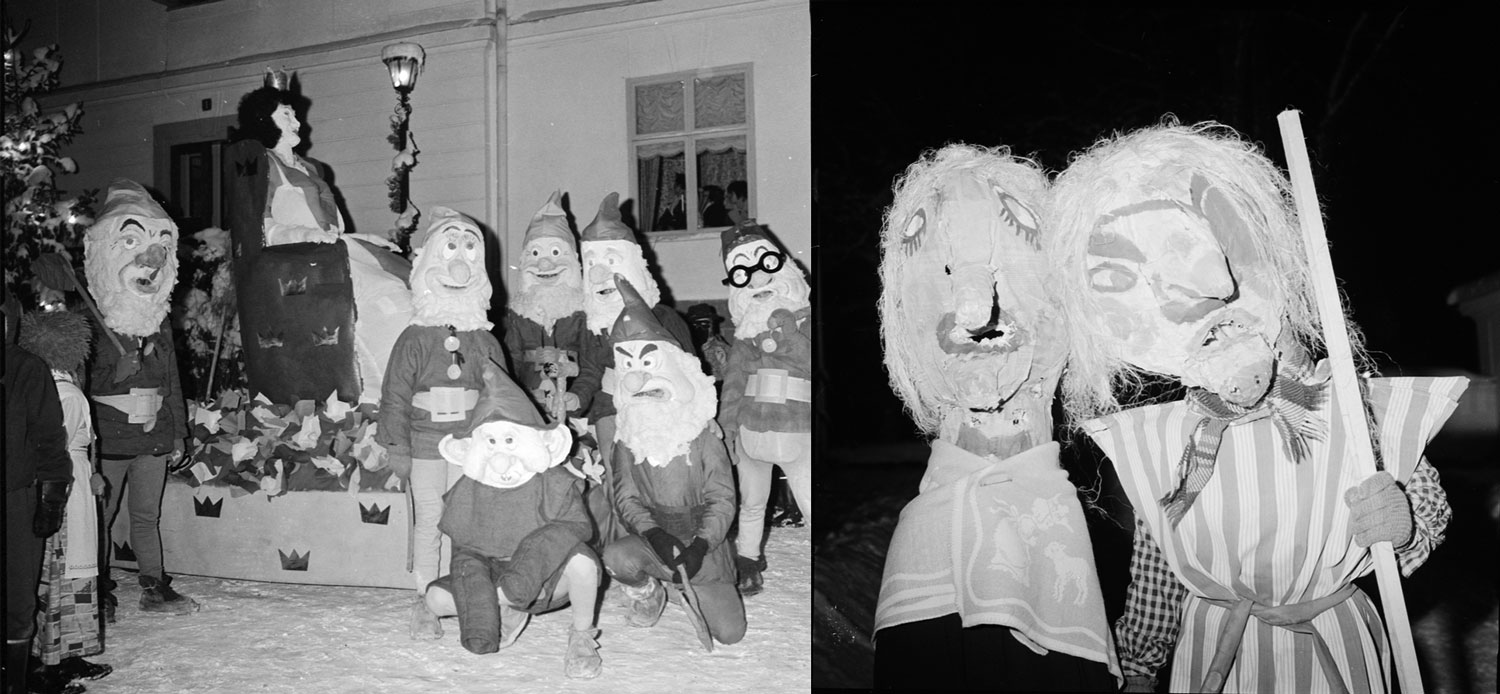- Startpage
- In English
- The Inventory
- Knutsmasso
Knutsmasso
In the past Christmas celebrations ended on St Knut's day, 20 days after Christmas Eve. Christmas was cleaned away and all that was left of the Christmas food was eaten. It was not unusual to dress up and go and knock on doors to get invited in for alcohol and other things at the neighbours' houses (a tradition which also occurs on other days during the year).
Location: Especially in parts of Uppland, Värmland och Östergötland.

Knutsmasso in Gimo 2012. Photo: Marlene Hugoson/Isof.
Nobody knows for sure how old this tradition of dressing up is, but the celebration of Knutsmasso or Knutsmäss is celebrated on St. Knut's day according to the calendar, which got its name from two Royal Danish saints from the early Middle ages. At the end of the 17th century the feast was moved to 13 January.
In some industrial communities in Uppland - Gimo, Östhammar och Österbybruk - the tradition is of great importance. In Gimo, well-attended celebrations are organised on 13 January every year, including games for children, a street carnival with parades of parade carts of different size, street vendors, and a midnight disco where the best-dressed are given prizes for their carts and costumes. The preparations are important and may last for months, masks must be kept secret until it is time to show them. The celebration is kept alive at each site, and in recent years the festivities in Uppland have been regularly documented by The Institute for Language and Folklore. The dressing up fun in connection with St Knut's day occurs in various forms in other parts of Sweden too.

